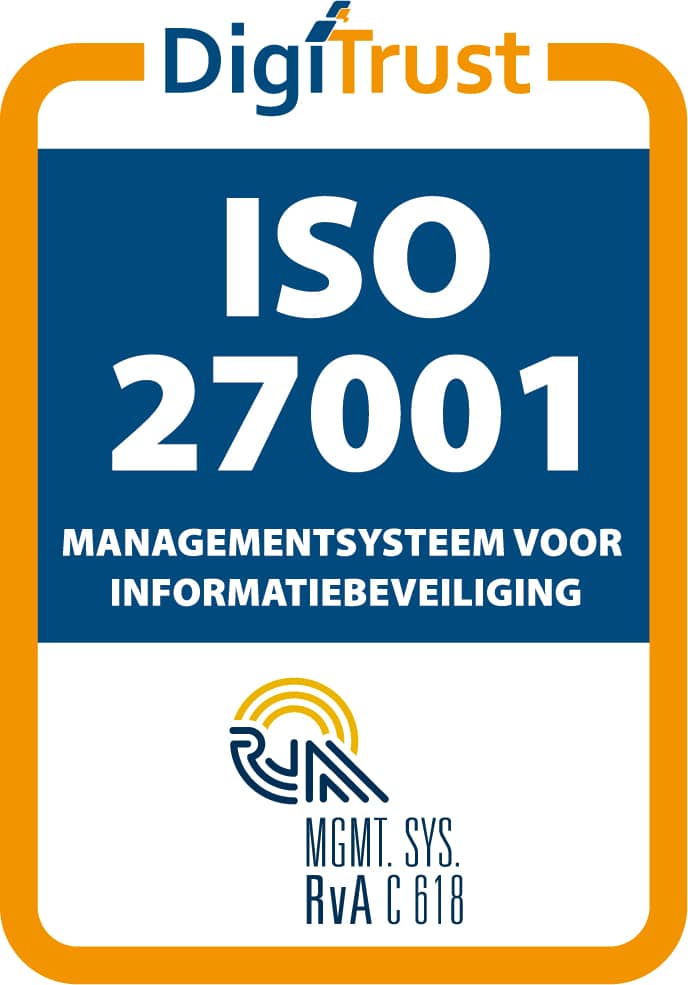Accountancy
Digital signature in accountancy
The digital signature or electronic signature in accounting was introduced in 2016 and will become mandatory for filing all financial statements as of 2019. A process is currently underway to allow only electronic filing of documents to the Chamber of Commerce.

Banks have also wanted to receive (credit) reports digitally since 2017. All this has a major impact on the accountancy world because these developments mean that the wet signature is no longer sufficient. In fact, this signature cannot even be placed anymore. Still, many documents need to be accompanied by an auditor's report.
The legislative amendment will take effect in phases. The annual accounts of legal entities with a duty to publish that fall under the business class micro or small can, for financial years starting on or after 1 January 2016, only be filed electronically. The filing of paper annual accounts is therefore no longer allowed for financial years beginning on or after 1 January 2016. Legal entities in the medium-sized business class will follow one year later. Large legal entities will have to file their financial statements electronically for financial years starting on or after 1 January 2019 at the latest.
Electronic filing means filing via SBR by the accountant or entrepreneur. In addition to the SBR method of filing, entrepreneurs can also use the online service 'Self filing of annual accounts' by the Chamber of Commerce.
Qualified digital signing
Where the accountant used to put a 'wet' signature, a digital signature with authentication is increasingly required. Banks, the Chamber of Commerce and other institutions want to be confident that it is the accountant who has signed himself. This guarantees the integrity of the annual accounts, for example. The digital signature of accountants is regulated by means of professional certificates.
Occupational certificate
The digital professional certificates used for accountants are not free, and their introduction has some impact on the organisation. But in the end, the costs and efforts do not outweigh the benefits. The professional certificate can also be used to sign all documents, to digitally sign e-mails and for all correspondence with clients. It is another step towards complete digitisation and the paperless office.
Standard Business Reporting (SBR)
Standard Business Reporting, or SBR for short, is the standardised way in which private and public organisations can receive accountability reports, such as tax returns and annual accounts. This is done in the XBRL format defined for this purpose. A kind of XML for financial reporting. SBR goes further than simply standardising the message to be exchanged, such as financial statements, income tax returns, corporate tax returns or VAT returns. SBR also focuses on the way in which accountability reports are sent. The latter could include a uniform means of identification and authentication, such as the use of the personal digital professional certificate. This is a particularly important theme in accountancy.
Choose the right platform
If an accounting firm makes the choice to go digital, it is important to look beyond the issues of the day. Experience shows that for many organizations one type of document is the reason to start signing digitally. However, if one looks a little further into the future and a little more broadly within the organization, many more types of documents appear to be eligible for digital signing. The choice of platform is therefore important because of the diversity of documents to be signed in accountancy, the possibilities of advanced and qualified (on 1 document) signing, the required authentication means and the possibly changing legislation. A good example is the employment contract. As of July 1, 2016, by law, this must be signed by the employer with a qualified digital signature.
Benefits Zynyo
Zynyo Signing Service Provider is the ideal partner for accountancy and offers the following benefits:
✓ Certified cloud hosting of professional certificates
✓ Advanced and qualified signing
Compliant with eIDAS and international agreements
Compatible with all common accounting software
Wide variety of authentication methods
In addition, the platform must be able to respond quickly to changing legislation and/or its enforcement. The European eIDAS regulation has been in force since July 1, 2016. Based on this and Dutch legislation, compliance monitoring will increase, either by the Radiocommunications Agency or other (audit) bodies. Among other things, hosting PKIoverheid in the cloud is subject to strict regulations, both in terms of infrastructure and also process design.
The platform must then support these rules for qualified digital signing. If, in addition to signing with your own certificate, you also want your client to sign digitally, choose a platform that supports both advanced and qualified digital signing and can respond to legal changes quickly and appropriately.
